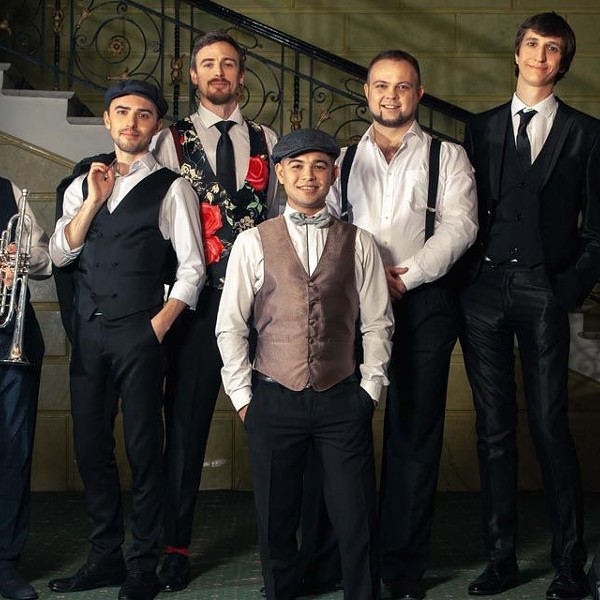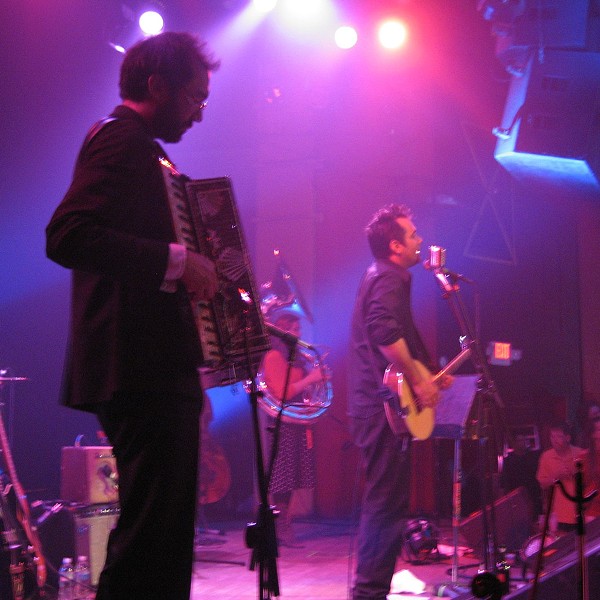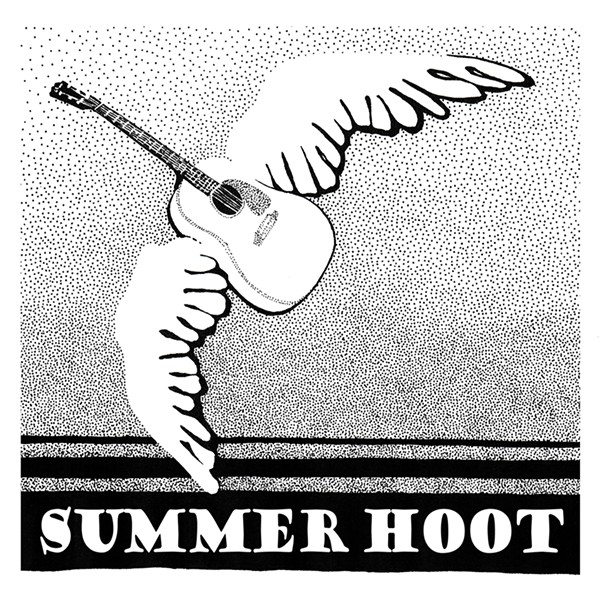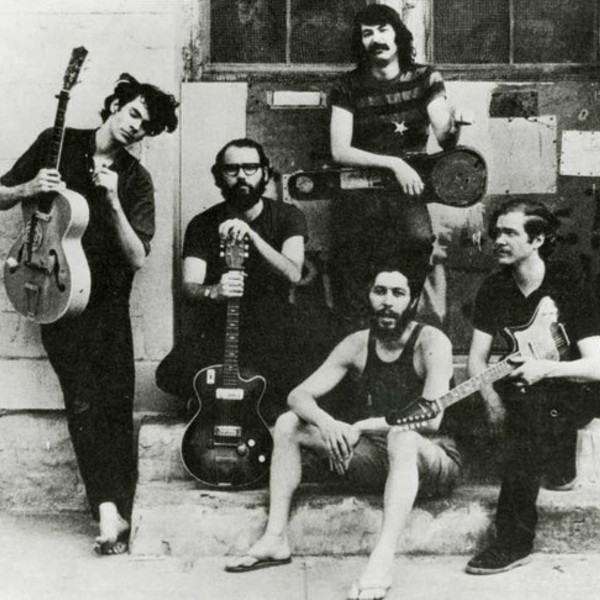It makes perfect sense that Brian Dewan’s father, Edmond Dewan, is both a physicist and a musician. In the end, one plus one will always equal two, and the musical methods of the younger Dewan are nothing if not the gloriously brainy and quirky synthesis of science and art.
“My dad plays the organ. He doesn’t compose, but he does like to improvise,” says the stocky, well-coiffed Dewan. “He exposed me to [modernist composer] Edgard Varese, [organists] Jehan Alain and Jean Langlais, and early electronic music like [1960s duo] Perrey-Kingsley and Dick Hyman’s Moog records. He did research work for the Air Force during the height of the cold war, when the government was trying to second-guess what the Russians were doing and was indiscriminately funding just about any type of research, or so it seemed. So he was involved in a lot of really interesting projects, like researching [the phenomenon of] ball lightning and attempting to use brain waves to send Morse code. Weird stuff.”
Dewan’s music certainly qualifies as weird stuff itself, even to his fans. Generally speaking, it falls into either of two categories: 1) a folk-based vocal style that references hymns, obscure historical and topical songs, and the popular music of the last two centuries; or 2) the peculiar freeform, retro-futurist electronic music that he performs solo and with his cousin Leon Dewan under the name Dewanatron. But in addition to being a classically trained instrumental polymath with a bent for offbeat sounds—he plays anything with a keyboard, as well as homemade electric zither, autoharp, dulcimer, drums, and small wind instruments like the pennywhistle and the ocarina—Dewan, 45, is an underground renaissance man of the first order, a sculptor, painter, poet, furniture designer, orator, illustrator, and performer. And, perhaps most notably, with Leon he is also the co-inventor and manipulator of an ever-burgeoning arsenal of one-of-a-kind electronic instruments that are also called Dewanatrons.
Any one of the solid-state analog Dewanatrons could easily pass for the deus ex machina of a 1950s science fiction movie, and each has a name to fit: the Alphatron; the Swarmatron; the Dual Primate Console; the Portative Melody Gin; the Executive Chua Comber; the Astro-Space Organ. Most of these devices are housed in Dewan’s weathered Catskill Victorian, which is itself one big, enigmatic conversation piece. Pass through the detritus-piled front porch and navigate the teetering towers of castoff cultural ephemera and arcane instruments in the front parlor, and one finds the owner’s odd contraptions—and the endless mountains of raw electronic guts that comprise their innards—filling every nook and notch of the creaky old house. “Right now, I’m in the middle of getting the basement ready so that a concrete slab can be poured for the floor,” he excitedly says. “After that’s all done I’ll be able to set up a real workshop and do everything down there, instead of squeezing it all in up here.”
As his cat leaps from stack to stack behind him, Dewan turns to fire up the Coin-Op Melody Gin, a curious, angular box sporting a large sound hole and an array of knobs and switches that operate a series of oscillators within. The instrument comes alive and emits a signal recalling any number of vintage Atari video games (think Pong), which Dewan then begins to manipulate via the controls. Within seconds the steadily broadcasting bleeps and bloops have been reshaped into phased, gracefully morphing pulses that move with their own strange rhythms, artful figures that arc and pirouette like the strokes of a celestial paintbrush.
Rather than seeing themselves as instrumentalists when it comes to making music with theses appliances, however, Dewan and his cousin instead maintain that they’re merely the machines’ facilitators. “The special purpose of Dewanatrons is to grow music live in collaboration with the operators who guide them,” reads the mission statement at Dewanatron.com. “While inherently musical in their impulses, the machines have no discipline and require governing by judicious overseers. The operators begin a process [that] develops into a shape beyond their authorship; the operators become gardeners, watering and pruning, mulching, and composting sound. The music becomes a contrapuntal morass, twining and climbing, chirping, buzzing, blinking, snapping. The operators guide the instruments, and the instruments carry the operators and others through an ever-metamorphosing landscape.”
Dewan grew up in Lexington, Massachusetts, and attended Ohio’s Oberlin College before returning to New England to partake in Boston’s underground rock scene. In 1987 he moved to New York, where he immersed himself in the city’s experimental music and art world, playing venues like the Knitting Factory, Dixon Place, and the Bog, and performing in and composing for the band that accompanied Blue Man Group’s earliest performances (he even appeared with the troupe on “The Tonight Show”). The ex-New Englander also befriended They Might Be Giants, collaborating with the indie sensations on several recordings and contributing artwork for the band’s T-shirts and album graphics (one of Dewan’s “shrine” sculptures graces the cover of TMBG’s smash 1989 album, Lincoln; he also designed the cover of David Byrne’s 1992 release Uh-Oh, as well as the interior packaging of Neutral Milk Hotel’s influential 1998 classic, In the Aeroplane over the Sea). Over time other plum gigs began to come his way, such as writing music for “Sesame Street,” appearing in the überhip downtown Loser’s Lounge revues, and becoming a member of the ongoing repertory Raymond Scott Orchestrette. In his folk/story-song guise he released two critically adored albums, 1993’s Brian Dewan Tells the Story (Bar/None Records) and 1998’s The Operating Theatre (Instinct Records).

















